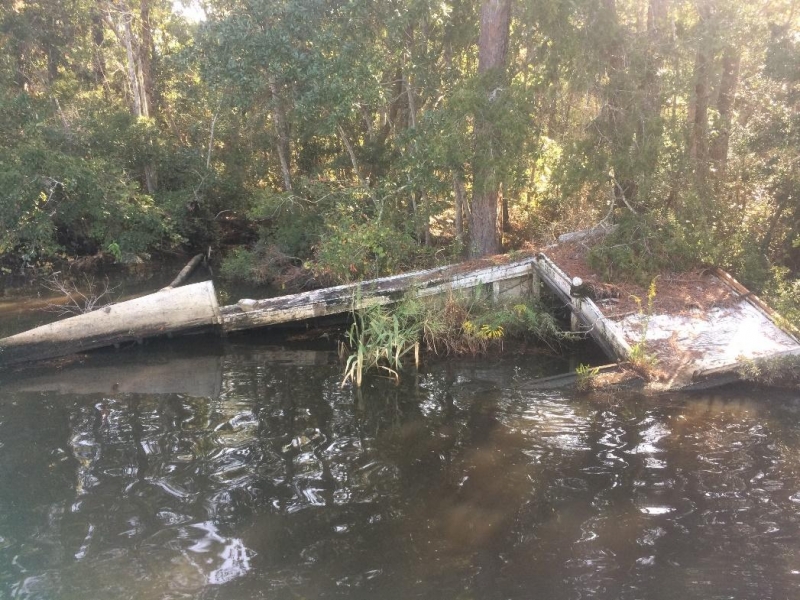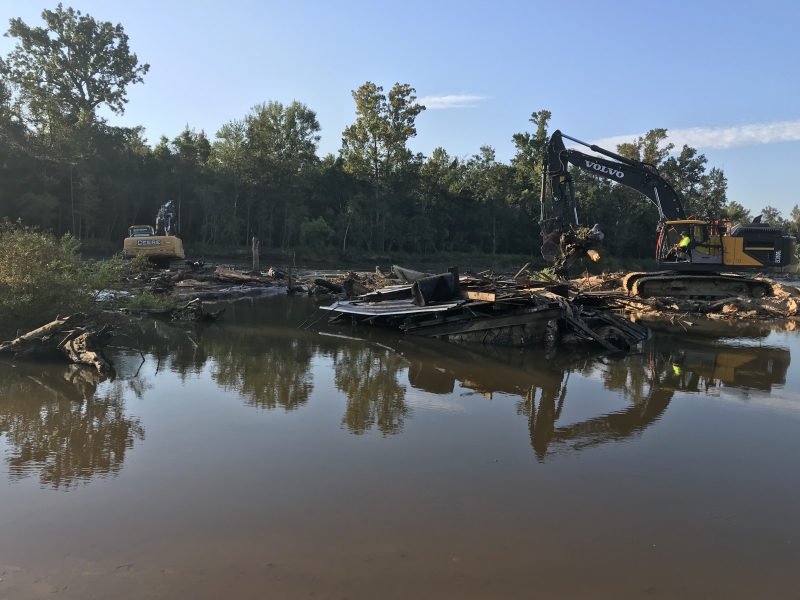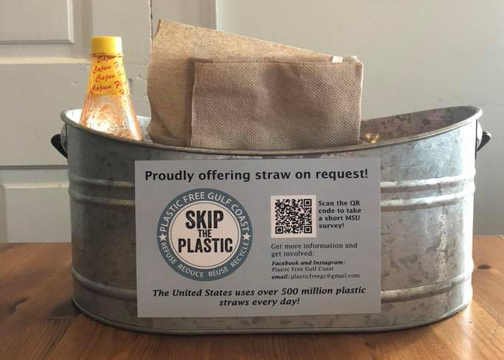Thousands of miles of rivers east of the Rocky Mountains flow down the continental US and empty into the warm waters of the Gulf of Mexico. Debris from as far away as Minnesota and Pennsylvania can end up in the waters off the Louisiana or Alabama coast. Preventing and removing debris in the Gulf States can be a huge challenge, but the Marine Debris Program’s partners in the region are up to the task.

The Fish and Magnolia Rivers cross Alabama and meet the sea through the estuary of Weeks Bay. Sunken boats dot the estuary’s shoreline and its tributaries. These derelict vessels are dangerous to the surrounding ecosystem and to people who work or play on the water. The Weeks Bay Foundation and Weeks Bay National Estuarine Research Reserve, supported by the NOAA Marine Debris Community-based Removal grant, are working to remove derelict vessels and large debris from Weeks Bay Estuary and Turkey Branch.

Further along the Gulf Coast, the Pearl River used to connect to the Gulf of Mexico on the border of Mississippi and Louisiana. A huge log jam full of debris has kept the water from flowing freely. This log jam contains not just woody debris, but all sorts of man-made trash, including parts of houses, boats, coolers, bags, and even large appliances. The Southeast Aquatic Resources Partnership (SARP), Southeastern Association of Fish and Wildlife Agencies (SEAFWA), and the Pearl Riverkeeper with support from US Fish and Wildlife and a NOAA NOAA Marine Debris Community-based Removal grant facilitated the removal of over 18,000 pounds of debris as part of an effort to, once again, allow the river to flow freely to the Gulf.

Citizens of the Gulf Coast recognize that debris doesn’t only come from up river. With the support of a NOAA Marine Debris Prevention grant, the Plastic Free Gulf Coast program is pulling together partners from the Panhandle of Florida to Texas to help coastal restaurants move away from single-use plastics. They are hoping to create a regional green economy that supports consumers and businesses working together to make a difference when it comes to marine debris in the Gulf of Mexico.
The Marine Debris Program is proud of our Gulf of Mexico partners and the amazing work they are doing to protect their unique waterways from marine debris.
It’s Gulf of Mexico Week on the Marine Debris Blog! Check out Tuesday’s post on Litter-free Mardi Gras and tune in Thursday for a closer look at the Pearl River Project.

I want to help!